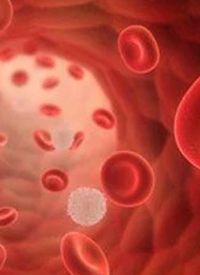Article
Brexucabtagene Autoleucel Elicits OS Benefit in Relapsed/Refractory B-ALL
Author(s):
The CAR T-cell therapy brexucabtagene autoleucel produced a median overall survival of 26 months in patients with relapsed/refractory B-cell acute lymphoblastic leukemia.

The CAR T-cell therapy brexucabtagene autoleucel (Tecartus; formerly KTE-X19) produced a median overall survival (OS) of 26 months in patients with relapsed/refractory B-cell acute lymphoblastic leukemia (B-ALL), according to 3-year follow-up data for the phase 2 treated patient cohort from the phase 1/2 ZUMA-3 trial (NCT02614066).1
Findings also showed that patients who experienced a complete remission (CR) or complete remission with incomplete hematologic recovery (CRi; n = 39) achieved a median OS of 38.9 months. Among all patients in the phase 2 treated cohort (n = 55), the 3-year OS rate was 47.1% (95% CI, 32.7%-60.2%).
Additionally, the overall CR/CRi rate was 71%, and the CR rate was 56%. Twenty percent of patients underwent subsequent allogeneic stem cell transplant (ASCT). The median relapse-free survival (RFS) censored at subsequent ASCT was 11.6 (95% CI, 2.7-20.5) and 11.7 months (95% CI, 2.8-20.5) for those not censored at subsequent ASCT.
At a median follow-up of 41.6 months (range, 32.7-70.3), patients treated at the pivotal dose of 1 x 106 CAR T cells/kg in both phase 1 and 2 (n = 78) achieved a median OS of 25.6 months (95% CI, 16.2-47.0). At data cutoff, 36% of these patients were still alive. The median duration of remission (DOR) censored at subsequent ASCT was 18.6 (95% CI, 9.6-24.1) and 20.0 (95% CI, 10.3-24.1) months for those not censored. The median RFS for both was 11.7 months (95% CI, 6.1-20.5).
“For adult patients living with ALL, there is a need for therapeutic options that provide long-term responses,” Bijal Shah, MD, an investigator for ZUMA-3 and a medical oncologist at Moffitt Cancer Center, stated in a news release. “The continued durable response and significant improvement in survival indicated by these new data can potentially establish a new standard of care for adult patients living with this aggressive form of leukemia.”
In October 2021, the FDA approved brexucabtagene autoleucel as a treatment for adult patients with relapsed/refractory B-ALL, based on previously reported data from ZUMA-3.2
Results from the phase 1 portion of the research showed that brexucabtagene autoleucel had a manageable toxicity profile with an overall CR/CRi rate of 83%, and the recommended phase 2 dose of brexucabtagene autoleucel was determined to be 1 x 106 CAR T cells/kg.3
The ongoing, international, multicenter, single-arm, open-label, registrational trial is evaluating brexucabtagene autoleucel in adult patients with ALL whose disease is refractory to or has relapsed following standard systemic therapy or hematopoietic stem cell transplant.
Enrolled patients were administered conditioning chemotherapy comprised with fludarabine 25 mg/m2 on days –4, –3, and –2 and cyclophosphamide at 900 mg/m2 on day –2. A single infusion of brexucabtagene autoleucel was given on day 0 at a dose of 1 x 106 CAR T cells/kg.
The trial’s primary end point is CR/CRi rate per central assessment. DOR, RFS, OS, minimal residual disease negativity rate, and ASCT rate are serving as secondary end points.
Patients enrolled in phases 1 and 2 had a median of 2 prior lines of therapy. Forty-seven percent of patients received 3 or more prior therapies.
Regarding safety, rates of grade 3 or higher treatment-related adverse effects (AEs) remained unchanged since the prior data cutoff in pooled patients from phase 1 and 2. Investigators have not observed any grade 5 AEs since the prior data cutoff.
“We are encouraged by the sustained benefit that a single one-time treatment of [brexucabtagene autoleucel] continues to provide for patients living with this difficult-to-treat blood cancer,” Frank Neumann, MD, PhD, senior vice president and global head of clinical development at Kite, stated in a news release. “Our hope is that these results, along with our commitment to long-term research of [brexucabtagene autoleucel], will continue to provide clarity to physicians on optimal treatment methods for these patients living with this rare disease who have suffered historically poor outcomes.”
References
- Kite’s Tecartus® CAR T-cell therapy demonstrates overall survival benefit in three-year follow-up of pivotal ZUMA-3 trial in relapsed/refractory B-Cell acute lymphoblastic leukemia. News release. Kite. February 9, 2023. Accessed February 9, 2023. https://www.gilead.com/news-and-press/
- U.S. FDA approves Kite’s Tecartus® as the first and only CAR T for adults with relapsed or refractory B-cell acute lymphoblastic leukemia. News release. Kite. October 1, 2021. Accessed February 9, 2023. https://bit.ly/3xcUQH8
- Shah BD, Bishop MR, Oluwole OO, et al. End of phase I results of ZUMA-3, a phase 1/2 study of KTE-X19, anti-CD19 chimeric antigen receptor (CAR) T cell therapy, in adult patients (pts) with relapsed/refractory (R/R) acute lymphoblastic leukemia (ALL). J Clin Oncol. 2019;37(suppl 15):7006. doi:10.1200/JCO.2019.37.15_suppl.7006








